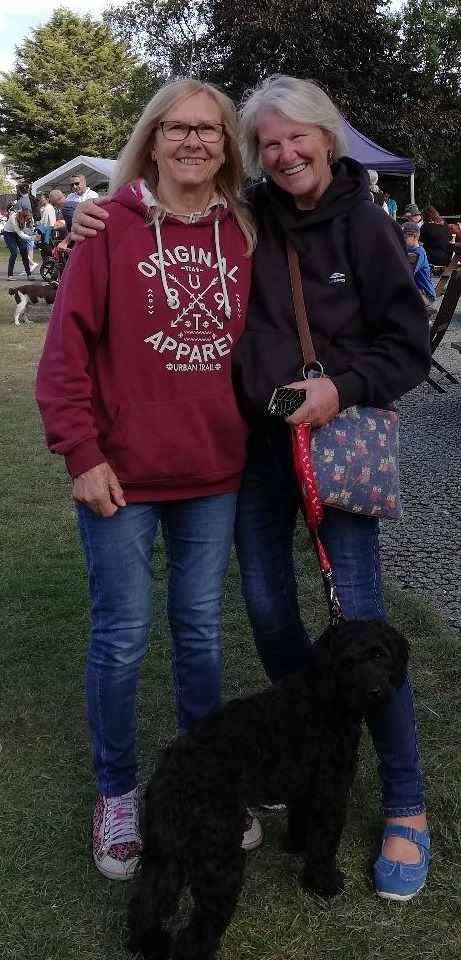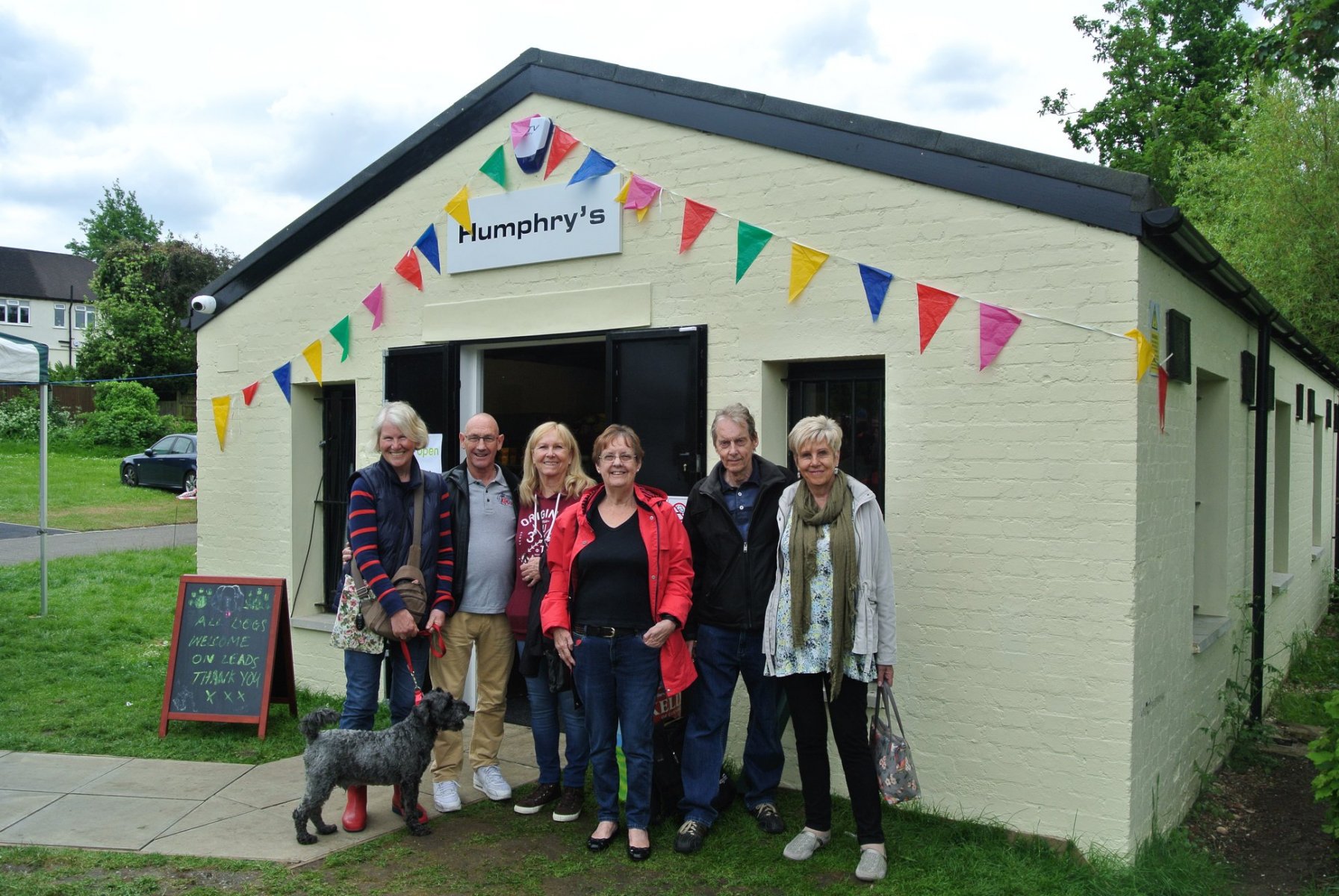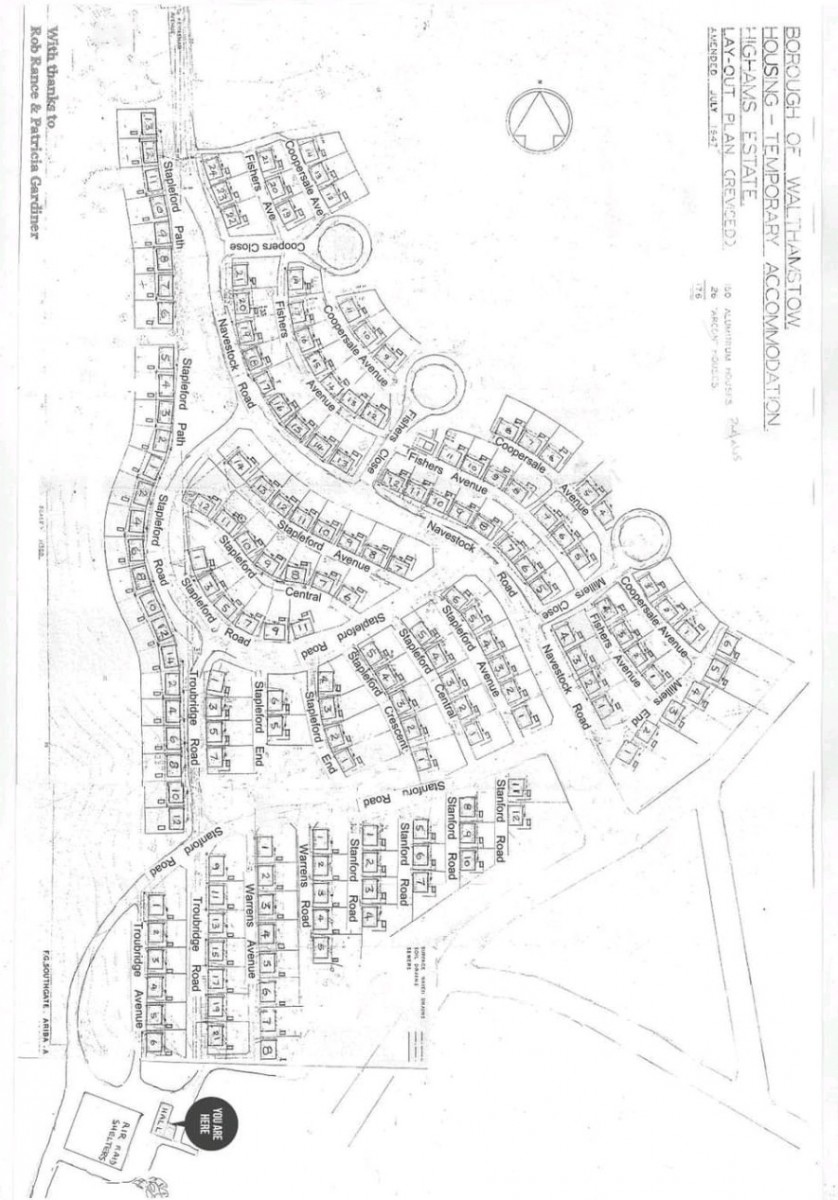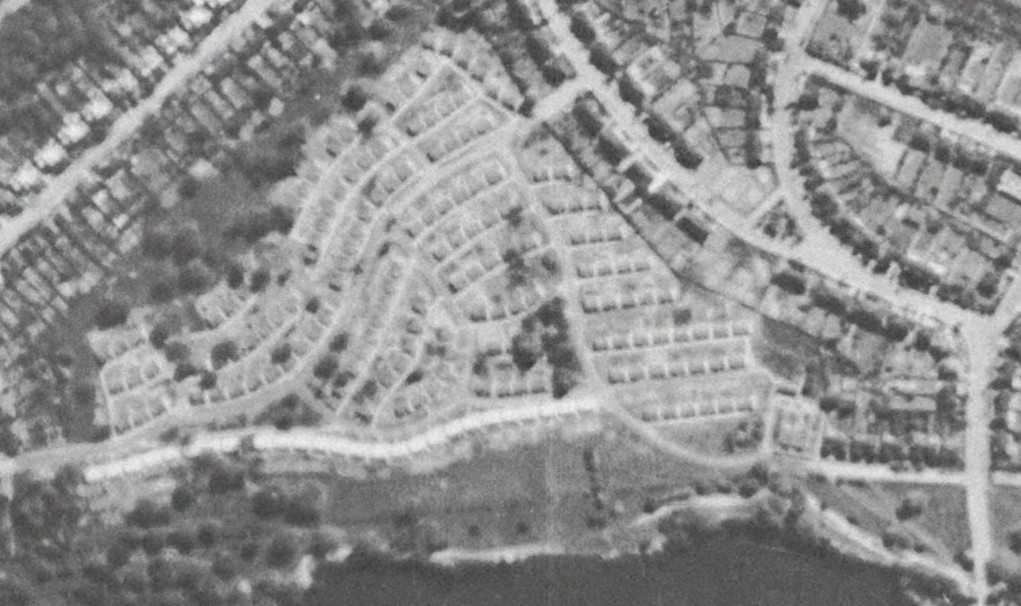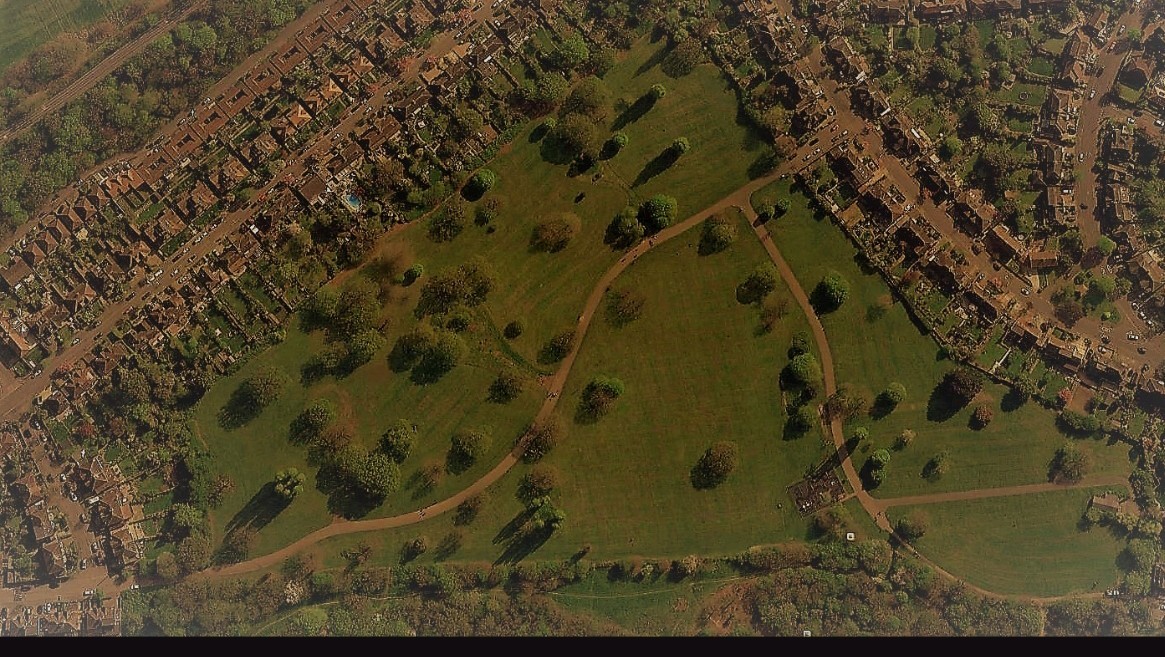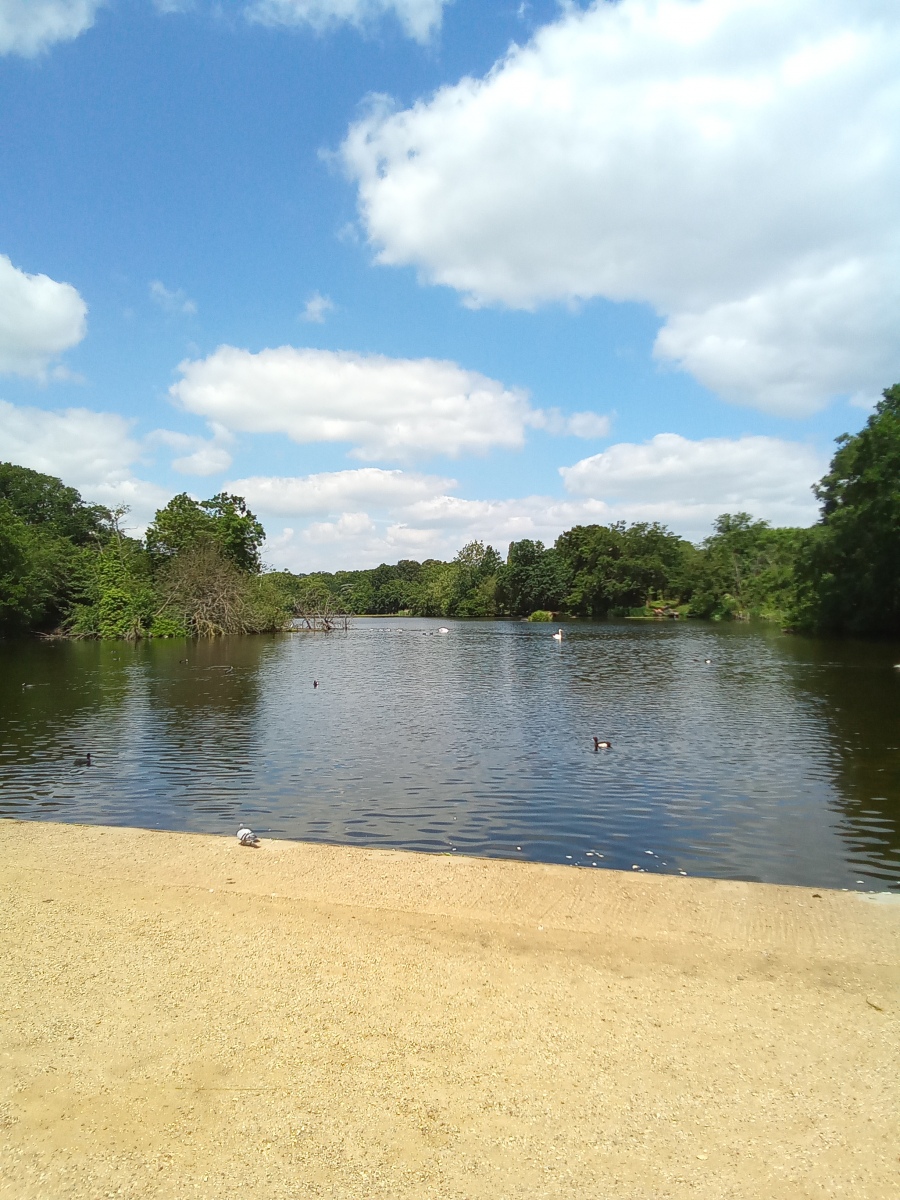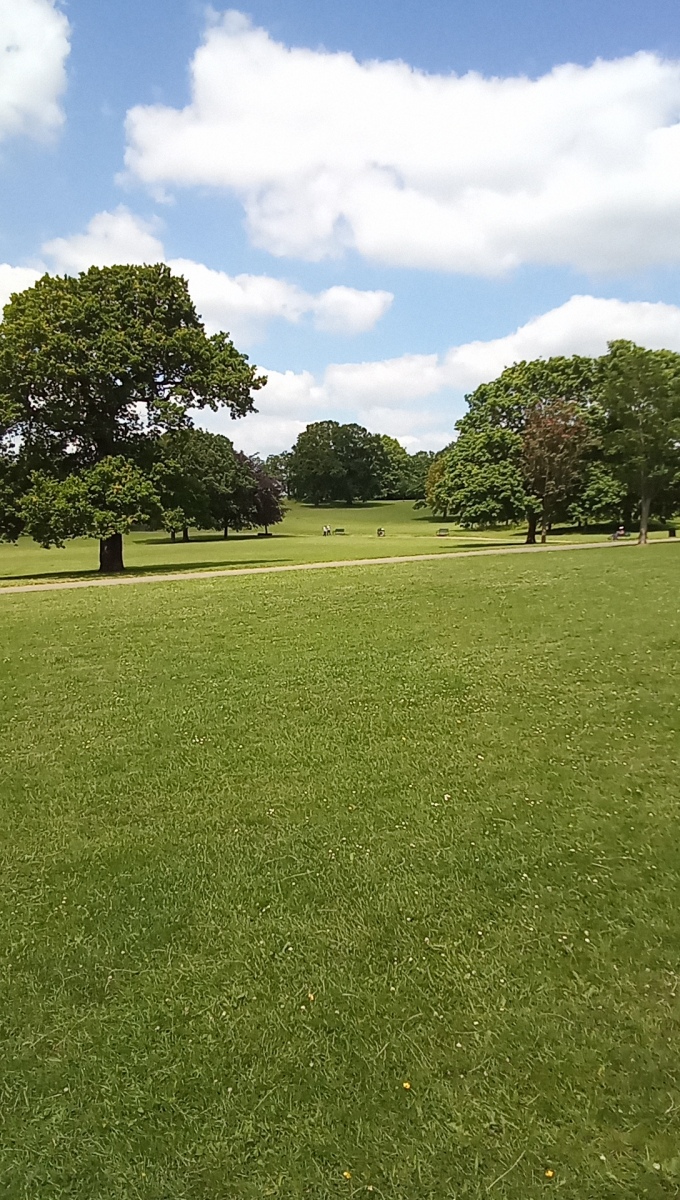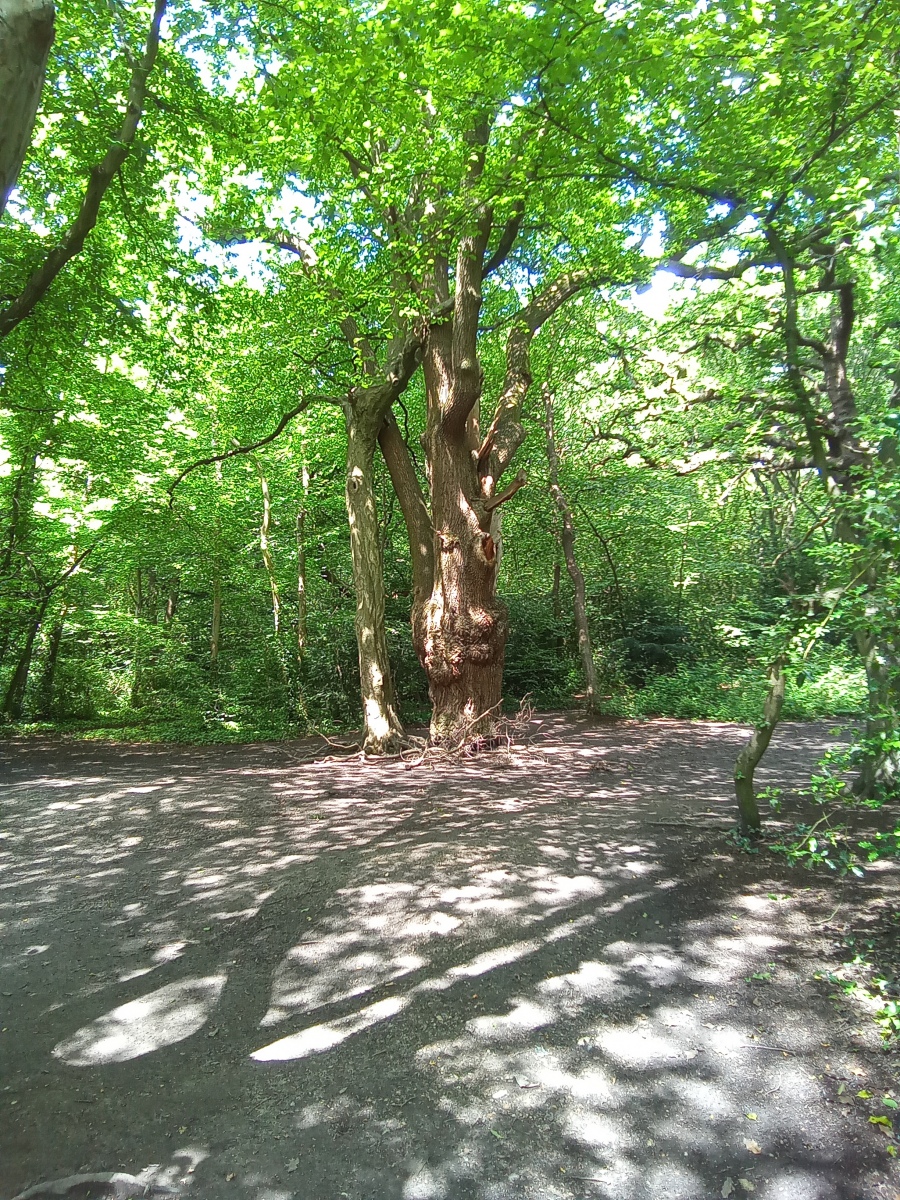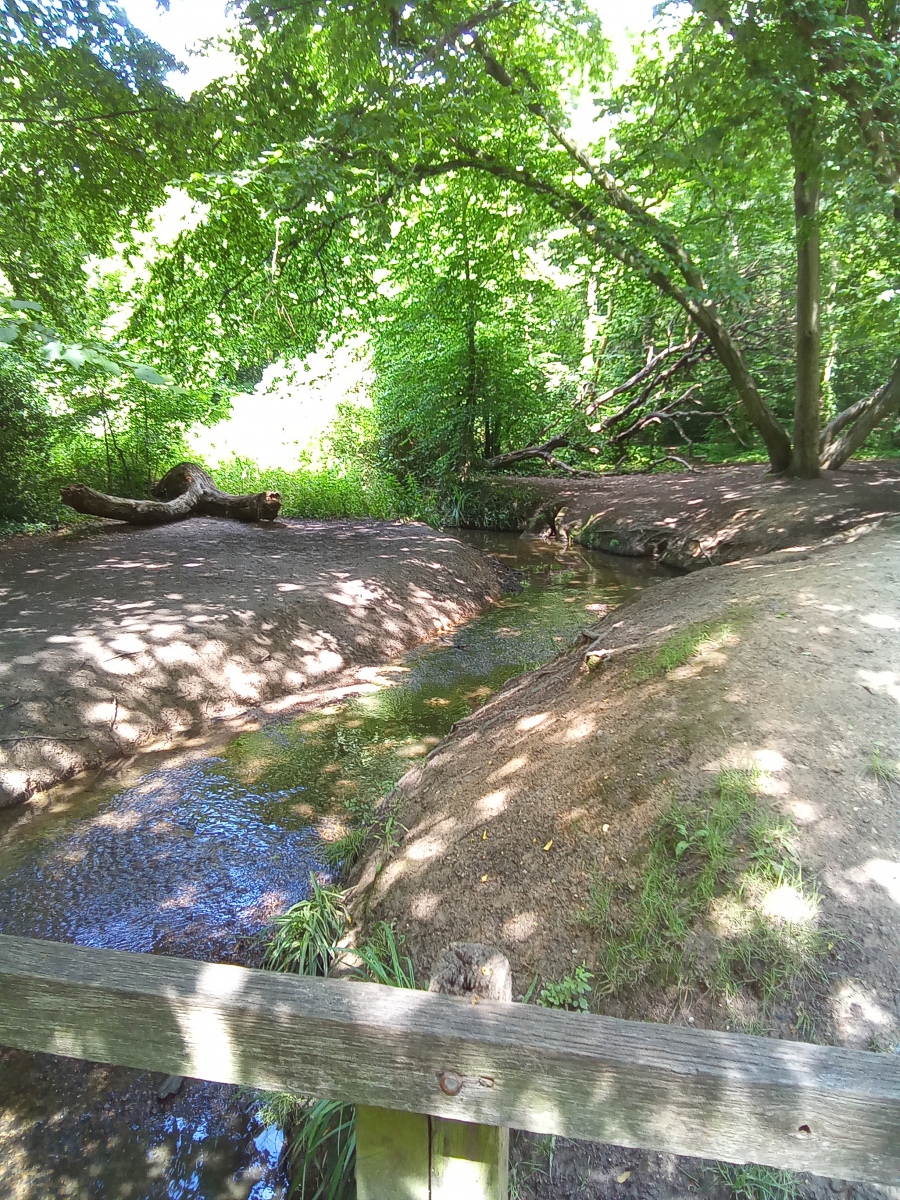Highams Park
Highams Park is a Special Area of Conservation and a Site of Special Scientific Interest. This was once an area of woodland pasture believed to have been cleared by the Saxons and there have been a number of manor houses here, the original of which was nearer to the river Lea. After this was demolished a new manor house was built in the north east of the manor overlooking the green at Woodford in an area referred to as Higham Hill in the 17th century. The current building erected in 1768 had a succession of owners including MP’s and State Governors before coming into the ownership of John Harman.

In 1947 when I was 2 years old my parents were informed by Walthamstow Borough Council that they had been allocated a Pre-Fab, 21 Fishers Avenue on the Highams Park Estate. My mother and father Win and Fred were delighted as my mother was expecting my brother Steve who was born in October 1947 just after we moved into the new Pre-Fab.The Pre-Fab was a detached single storey property with its own garden and even a shed with a corrugated roof. We had two bedrooms, a lounge and kitchen and an indoor toilet and bathroom. We had electric heating, hot water and a cooker. The only problem was the winter of 1947 was one of the coldest on record. It was freezing inside the Pre-Fab and I remember scraping ice from the inside of the bedroom windows!There were 176 Pre-Fabs on the estate and it was mostly young families who moved in after the war. I think there were around 200 children on the estate. I remember the ice cream vendor visiting the estate in the summer on his tricycle. His cooler was full of Walls ice cream cornets much to the delight of the children.My mother was a Sunday School teacher and she would take my brother and me with her every Sunday afternoon. The Sunday School classes were held in the Community building (which is now Humphry’s Cafe). I can remember singing choruses and my mother would accompany us on the piano. This building was also used for estate community events and Christmas parties.Living on the estate gave easy access to the forest and Highams Park lake. In those days you could hire a rowing boat from the boat house and my father would take my brother and me on the lake in the summer months. I often go to visit the Highams Park and on a hot summer’s day I can still see the foundations of our Pre-Fab and that brings back many happy childhood memories!
I was born 3rd May, 1948, in Walthamstow, we moved to Highams Park prefabs in 1951, when I was 3. Living in the prefabs was a wonderful experience, some of the happiest days of my life.Our prefab had two bedrooms, mum and dads and the other I shared with my three brothers. There was a fire in the living room and although we had a bathroom, in the winter us kids would have a bath in a tin tub in front of the fire, the fire was the only form of heating apart from the cooker in the kitchen. In the winter I used to grab my clothes from the bottom of the bed and run to the kitchen, put my clothes under the grill for a few moments to warm up before getting dressed. My brothers and I used to surround the cooker for warmth before going to school. The windows would have ice on the insides and the curtains used to stick to them but it was still heaven to live there. We had so much space and freedom, such a large playground, all the trees to climb, the open fields and the lake.The cows used to roam freely often coming into our gardens and peering through the windows, sometimes we had the odd horses coming round, one of the horses ‘Sally’ gave birth to a foal at the end of Troubridge Road, the road in front or our prefab. My mum was the one who everyone came to with sick or injured animals and this particular day mum came to help Sally deliver her foal. There were many little animals that we helped, once we had a baby thrush, we called it ‘Brownie’. It had broken its wing or something, anyway mum did all she could for it, giving it food and water, it got better and learnt to fly again, so we released it back into the wild, it came back everyday after that to see us. We had an Anderson shelter in the garden. One day my brother Peter had put a horse in there, dad asked where it came from and Peter said it was one Dan Burgess (the forest ranger) said he could have as it had no mark on it and didn’t know who it belonged to. Needless to say we had to give the horse back. Behind the shelter we had a little graveyard that we used to bury all the little animals that sadly didn’t make it.My dad also had an aviary in the garden where he kept his canaries; it measured about 10’ x 6’. When dad gave up the birds he transformed it into a playhouse for me, it had two rooms, I had a table and chairs and a little cupboard. I spent a lot of time with my friends playing in it. Dad also made us jiggers (soap box carts), which we used to take up to the top of the hill at Navestock Road and ride all the way to the bottom by the Air Raid Shelters, gathering speed all the time, it was great fun. Another game we all loved to play was at the end of our path, Warrens Avenue, marbles and that was the official marble pitch, several games used to be going on at the same time.The Sunday school was at the bottom of Troubridge Road, I suppose it was a community hall as well but that’s where my Sunday school was. Next to that was the communal Air Raid Shelters leading down to Tamworth Avenue, they were good fun for children to explore and play on, we obviously wasn’t allowed to but that made it more exciting. There were public toilets near them, just by the lake and the attendant used to shout at us to get away from them; we couldn’t see what the dangers were, although I do remember one of the boys getting stuck inside the dark, dank place, which was really scary even when there were a few of us together.At the lake in front of the prefabs was a place we used to call the beach, us children used to paddle and the mums and dads used to picnic on the grass. There was an older boy, Martin Murray, from Henry’s Avenue, that played in a group; often they would play their music as everyone sat there. The boat house used to sell tea, cakes and ice cream and also rent out the boats, there were canoes, skiffs and family boats, all were well used and enjoyed.In 1953 we had a street party to celebrate Queen Elizabeth II coronation, we had long tables with benches and seats from the hall and peoples homes, flags were flying everywhere and everyone joined in. There was a fancy dress parade for the children; I was dressed as a Salad Queen. Mum made a green shift dress for me and decorated it with real salad, lettuce and spring onions, I had a necklace of tomatoes and bracelets of cucumber, tomato and I think radish as well, which I did eat as the day progressed. It was a lovely day which was well remembered.I can’t remember anyone having cars on the estate, I can only remember the coalman in his coal lorry and we also had a green grocer van come round. Other than that it was a long walk to either Woodford High Road or Highams Park Village to get the groceries.Unfortunately, the prefabs were only meant for temporary housing and after so many happy years we were forced to move out in 1960. In 1961 the last family, the Tomlins, moved away from the 176 prefabs and they were pulled down. Like many people I still have my happy memories.The lake is still there and the Sunday school is now a store for the council, our estate is now green fields with a park on it, which I take my grandchildren to and show them where my home used to be, I tell them all the stories from my childhood.
I have such rich memories of growing up on the estate with my best friend Trish, who lived directly behind us. Trish and I both moved there when we were three, and soon discovered our birthdays were exactly one week apart, and from then on we became inseparable.I lived in Troubridge Road which is one of the few remaining roads, and leads directly to the little cafe now known as Humphries, but was then known as the Sunday School. Every Sunday afternoon between two and three, we all used to troop over there and sit on the wooden forms or chunky wooden chairs, have a story and sing hymns accompanied by the rickety old piano, all under the gentle care of Mr Brewer. The highlight was the annual Sunday School outing when we all used to pile on the coach and go to Maldon for the day. Other than that, the nearest we came to a seaside, which is what we counted Maldon as, was the short stretch of sloping mud leading down to the waters edge to the right of Troubridge Road which we lovingly called “The Beach”.We did not realise it at the time, but we were unbelievably lucky to have such a rich environment to grow up in. Our whole lives were lived around the lake and forest. We fished for frogspawn in spring, made dens inside the Hawthorns or climbed like monkeys up the tree which soon became known as the Monkey Tree, and which is still there to this day. We were carefree and daring taking risks which would never be allowed for todays children. Trish and I once made a den, at the end of a garden, that backed onto Forest Glade next to the River Ching, and Trish’s mum, my adored Aunt Peg, used to clean for the owner. He was a magistrate, and we lived in constant fear of being caught and sent to prison for life if we were ever discovered trespassing. We even planted flowers outside our den, in what we regarded as our very own secret garden. We were very daring, and I wonder what he thought when he eventually discovered our den at the end of his garden where the fence had surprisingly broken down, and magically, a path had suddenly arrived leading into it.I like to think he would have smiled, as one Christmas we went carol singing and knocked on his door with our rendition of Silent Night, and He opened the door. We were alarmed. But he smiled, and said – our faces were much prettier than our singing, and gave us half a crown, a huge amount of money for us. So perhaps he did recognise us after all, as the two den builders who had completely taken over, and transformed the end of his garden.All happy, golden days. Trish and I still keep in contact all these years later and count ourselves as extremely lucky to have had such a paradise to grow up in.
150 AIROH aluminium and 26 ARCON asbestos clad prefabs were built on the Highams estate during 1947. Using copies of the original council plan, plus Hale End ward Polling District records, I was able to add road names and numbering, to produce an estate plan that now hangs in Humphreys Café. This hall was our Sunday school/ community hall and appears to have been associated with an AA gun emplacement there during WW2. There was an air raid shelter next to it, and our son Scott said that during renovations of the old hall, rail tracks were found when digging the floor up. There is a photo of a 1953 Coronation party behind Troubridge Ave, where you can see the old hut and shelter. This is also in Humphreys along with various old family photos.My parents, William and Rose Rance, were the very first family to move to the prefab estate during 1947, into No.1 (of 6) Troubridge Avenue. I was born early 1948 and remained there until I was 5. You could run straight from it, across the grass down to HP lake, where my older half-sister did go swimming in, despite cows going into it as well. Many of my cousins would visit, as they lived in flats in Walthamstow. My brother made dens to hide in and carved a giant footprint in the dirt to scare other kids away. My father ran a darts club in the community hall and there is a photo of his cups and shields, me as a cowboy, my brother, sister and a cousin, dressed as red Indians, outside our prefab. We could get lovely ice cream, lollies and drinks at the ’Boat House’, as well as hiring a boat to row around the lake. My sister dug up a small object in our rear garden, which I found in a draw when I was about 10. It turned out to be a Roman coin, so there may have been an encampment there. We moved to an Oak Hill council estate house, but it was only a few hundred yards away, so we still played around the lake and in the forest. It was a wonderful place to have grown up in.In 1942, a new Royal Navy destroyer, HMS Troubridge, was adopted by the community of Walthamstow and the name was used for two of the street names on the estate.My now wife Mary, moved onto the estate in 1954/5 and lived at the other end of the estate. She used to go fishing with her father and her mum would bring them a cooked breakfast by the lake. She and friends used to go ‘scrumping’ the fruit trees in the back gardens of the ‘big houses’ behind where she lived. She remembers ‘Pop’ selling groceries from his old estate car and letting the kids sit on the tail gate while he drove around. There was a van that sold vegetables and also a man, who would cycle around selling ice cream from a large box on the front of his bike.By 1961 many families had moved/been moved into Walthamstow council houses, and the prefabs started to be demolished. The last people to leave were Eleanor and Edward Tomlin and their dog Paddy, from 8, Troubridge Road. They wanted to stay in Woodford Green, so refused to be re-housed elsewhere. There was an article in the local paper showing her walking their dog and just a few prefabs still standing.
[Peter holds HIGHAMS (Hill) in lordship which Haldane, a free man, held before 1066 as a manor, for 5 hides. Always 2 ploughs in lordship; 4 mens ploughs.Then 8 villagers, now 10; then 2 smallholders, now 3; always 4 slaves.Woodland, 300 pigs; meadow, 18 acres; then 3-5 fisheries, now none.Then 1 Ox; now 15 cattle, 1 cob, 37 pigs and 2 beehives.Value then 60s; now £4.10s; when he acquired this manor he found nothingexcept 1 Ox and 1 sown acre.]
Chingford hatch Chingford plain city of london Epping Forest Epping Forest act Hale end Highams Park Prefabs Saxon Woodford green









